

A tale of the wild West — Boston Mark and the hunt for opals
I’ve always liked a good adventure, so it seems fitting that when choosing a honeymoon destination, a 2,000-mile drive through the desert would win over a week of sitting by a pool sipping neon-bright, over-garnished cocktails.
Of course, my husband and I didn’t have to take it the extreme, but naturally we did.
When we got the news that his friend was to be married in Scottsdale, AZ, my terrible sense of direction made me blurt, “Isn’t Arizona near Nevada?” Always willing to hear my schemes, my husband Joe answered, “Yes,” with intrigue and curiosity.
Before getting married a year ago — very much shotgun style, minus the pregnancy — we had gotten sucked into one of those treasure-hunting shows on the Travel Channel. Wide-eyed, we learned that you could mine for opals in Nevada. Being from the east coast, where you can blink and drive through a state, I thought it would make perfect sense to hop a state over to try our hands at becoming opal-rich.
After dragging the cursor over my Google map more times than I thought would be necessary, I realized Denio, NV, the Virgin Valley where the opals live, is about 16 hours from Scottsdale.
Any normal couple would have abandoned the trip; I, addicted to bad ideas, and Joe, a stubborn man who makes the impossible possible, embraced the plans.
After making sure to include a four-hour detour on the Extraterrestrial Highway, past Area 51, our flights were booked.
Along the way we learned how beautiful open space can be. For that week, out on the open road, I almost understood why people want to conserve, be green, and take care of our planet. The traffic was scarce — save for packs of free-range, long horn cattle that meandered across our path from time to time.
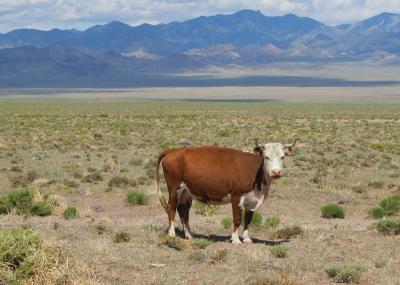
We made sure to see the Grand Canyon and the Hoover Dam, but we sailed past Las Vegas, noting the best attraction there to be miles of skid marks across the highway — tell-tale signs of drunken nights, cocaine binges, and everything Hunter Thompson-esque.
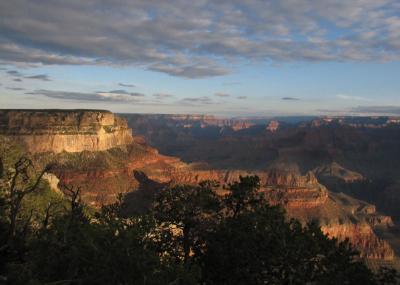
Before departing, I spent hours looking on Nevada’s tourism website for romantic stops to really make the most of the honeymoon theme. As fate would have it, Lovelock, NV was on our a route.
A seemingly quaint town (at least on the website), Lovelock is the former home of many Chinese immigrants who worked on the Central Pacific Railroad. Someone in Lovelock decided to further capitalize on the Chinese and create a tourist attraction where visitors could “lock their love” on a chain link fence. Truly hailing from ancient Chinese traditions, the idea of locking your love is just as it seems. Of course when we arrived in Lovelock we quickly learned the town had maybe a half dozen stoplights, some tired-looking residents, and more closed-down motels on one block than I have ever seen before. Despite the obvious tough times, the people we met were delightful and Joe was happy to purchase the biggest and most sturdy lock he could find.
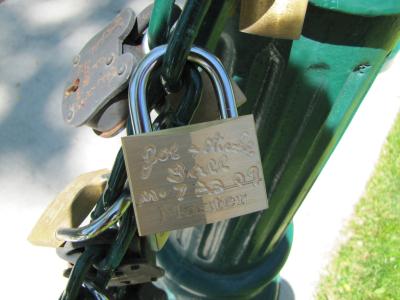
Continuing toward the opals and our inevitable good fortune we tossed the keys to our now locked lock of love out into the desert abyss, the warm wind whipping through the car windows.
Of course with every light and free feeling, there’s always a dark cloud waiting.
On a tip from the woman who runs the visitor’s bureau in Lovelock, we stopped by Thunder Mountain Indian Monument.
I’ve been many odd places in my life, but I have never felt so disturbed and heavy as I did wandering around this place — a playground come home, built from salvaged items suspended in place and time by white, ashen mortar.
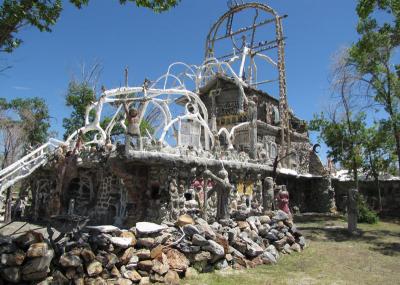
Thunder Mountain was built between 1968 and 1983 by Chief Rolling Mountain Thunder as a “monument to the suffering and the plight of the American Indian at the hand of the white invaders.” The story, long and complicated, goes on to explain that Thunder Mountain recognizes the price that was paid by a race who were marked for genocide in the name of “Manifest Destiny.” Rich in sculptures, adorned with symbols, this monument is now a State of Nevada Historical site and owned by the late Chief Thunder’s son, Dan Van Zant. A sad story in which Chief Thunder ended his own life, but lived one of purpose and point, Thunder Mountain’s tale is one worth researching.
So on to the mines we forged. And thank goodness for GPS.
Continuing down long stretches of endless road with rest areas little more than holes in the ground behind rickety shacks, we arrived at our turn, down an unmarked path. I say path because the Garmin only recognized our 10-mile route as “unpaved.” I am pretty confident if she could have spoken, she would have said, “Turn around my weary travelers.”
In a cloud of dust we arrived at a faint yellow-colored-trailer with a sturdy female watching guard and a mangy dog crisscrossing an open parking lot. She announced that Mark, inside the trailer, would help us get to mining.
Full of granola bars and ready to tackle the mountain, we jumped out of the car to meet, Mark — a presumed opal mining native.
My husband boomed to the very tan and Irish-looking Mark, “Hey Mark, what’s up? We traveled a long way to mine for opals.”
“Hey, watz goan awn,” Mark called back in a thick and all-too-recognizable Boston accent.
We learned that young Boston Mark had come to the opal mine the same way we had. And while we dug up various, large pieces of 16-million-year-old petrified wood and very few precious opals, he had struck it rich.
What was supposed to be a prospecting vacation for Boston Mark three years prior, had turned into a full-time job, during season of course. The other part of the year, when the Virgin Valley gets snow, Boston Mark ventures five hours away to Tahoe where he rides the ski slopes and gives new meaning to “living life.”
Heaving boulders from the ash and clay dirt, Joe followed instructions that were supposed to lead us to the jewels. I waited for each giant rock to sail past and I attacked the stone with my pick ax in hopes finding what we had come for.
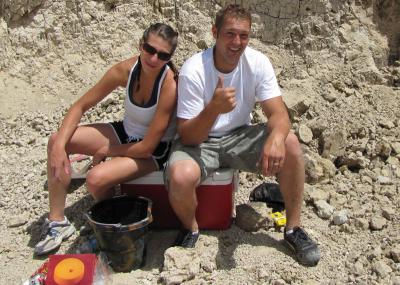
Nearly through our day, and still very little to show for our efforts, Boston Mark arrived at our site. Dropping his ski goggles over his eyes he motioned to step aside and within three hacks he extracted a beautiful yellowish opal from the mountainside that had been so barren to us all day. With a nod and smile, Boston Mark disappeared to the next work site, bound to help some other worn diggers find their slice of the pie.
I can’t say that opal mining is for everyone or that a wild West adventure is something you should try but I can tell you that I learned how much I have yet to figure out.
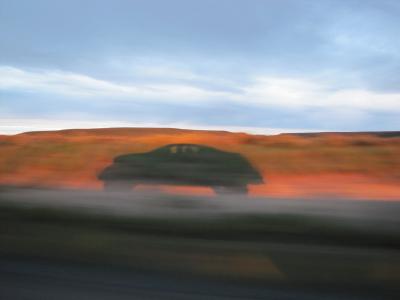
Back at work, my email inbox exploding around the clock, I can’t help but think about Boston Mark. About how he, like the endless road, like Chief Thunder, like the open space, is boundless. Rambling, Boston Mark has more figured out than Joe, I, or anyone we know does. And if thinking about a way of life that differs from the one you live is what adventure is all about, I just want to know when I can sign up for the next one.
Latest posts by Nicole Ball (Posts)
- A tale of the wild West — Boston Mark and the hunt for opals - July 12, 2010
- Third-hand smoke a threat to babies? - March 23, 2010
- Machine guns on Wall Street - January 3, 2010
- Forced onto the grid - December 10, 2009
 Print This Post
Print This Post




Nicole, GREAT post. Thanks for sharing. The American southwest truly IS a special part of the country, populated by special people.
A former dang-Yankee-from-back-east, I settled in New Mexico in 1975, and haven’t looked back. Lots of summer seasonal work in the states you covered.
Living in far West Texas (“No Country for Old Men” territory) now, and while I don’t consider myself a “Boston Mark,” I cherish those occasions when I meet one.
Nicole,
Thanks for sharing your adventure. You had me engaged from begining to end. Also, I learned something along the way. I am a homebody at heart but your story makes me want to experience the west firsthand. I look forward to your future journaling.
Nicole,
Your story put a big smile on my face. Please go on more adventures so I can read more great pieces like this one:).
I agree, great post!